There are several finds recovered in the Gaban shelter (see , promising, , promising e , promising), but the best known is the stylized female figure, found during the first excavation campaign of 1972, directed by Bernardo Bagolini, next to a Neolithic hearth regenerated several times; the find was found in the vicinity of another very particular object, a historiated handle made from a wild boar's shoulder decorated on all sides, both elements which have led to the hypothesis that this must have been an important place of worship where offerings were placed, probably for propitiatory purposes.
The statuette is obtained from a deer bone plate and ends in the lower part with a point, therefore without the possibility of support; it is decorated on both sides with a layer of white limestone applied as a base to the bone support on which ocher was then spread, visible above all in the lower part and on the back of the support. With regard to the use of ocher, microscopic investigations have ascertained that it was applied diluted with some liquid substance and not materials in the form of powder, spread with a precise brushstroke with clear-cut contours; the incisions and subsequent decoration were made with a flint tool. The use of ocher and animal bone support are characteristics coming from a tradition that was more widespread during the Upper Paleolithic and the Mesolithic, while details of the early Neolithic are the crutch arms, the breasts made evident by two "U" incisions which separate them from the arms, as well as a deep crescent (or bull's horn, as suggested by M. Gimbutas, 2008) incision to indicate a pendant under the neck. The head is separated from the body and the face has engraved eyes and mouth, while on the back the loose hair is represented by vertical incisions. Immediately below the waist runs a band decorated with eight vertical incisions to represent a belt and below the pelvis and legs decorated in ocher whose center is engraved with a vulva surmounted by a tree decoration. This last element (tree of life linked to the vulva) together with the use of red ocher (color linked to blood) have led to hypothesize the use of the object in relation to life and regeneration rituals probably linked to the agricultural world, as has been witnessed in many Balkan sites. The historiated handle is made from a wild boar's left humerus, decorated on all sides with symbolic motifs, probably of a narrative nature. On the external lateral face it has the following symbols in descending order, separated by engraved lines: a stylized figure, with raised arms and bent legs, called a praying figure; to follow three horizontal zig-zag lines to represent a stream; therefore a lozenge grid whose interpretation is ambiguous could be a cultivated field or a hill; finally the depiction of a horn motif surmounting a geometric decoration with bands of oblique and horizontal lines. A decorative "V" motif and notches of different sizes are engraved on the other faces, as if to mark the passage of time. Regarding this object M. Gimbutas writes: “…From the same layer of the cave of Gaban a boar shoulder engraved with a symbolic design was extracted. Its decoration, divided into four sections, depicts from top to bottom a figure in the shape of a frog, a triple zig-zag band, a net and a womb arranged in bands of streams. We are in the presence of an accumulation of symbols relating to regeneration: uterus - frog - water (or amniotic fluid). Once again the symbols of life dominate the bare bone, symbol of death…” (M. Gimbutas, 2008).
The actual use of the object is not known, but it has the detail of a hole on the top which has evident traces of wear from rubbing, as if a string was intended to slide through it. Also in this case we are talking about an object in which Mesolithic elements coexist (such as the use of the support of a wild animal and the lozenge pattern) with properly Neolithic motifs (the figure of the praying person).
Other objects referable to the early Neolithic level are:
- a fish-shaped bone plate whose use is unknown; it has a hole passing through one end in correspondence with the eye and therefore could have been used as a pendant or as a sound object (hung from a rope it was rotated producing a dark and suggestive sound);
- pottery decorated with decorations engraved with geometric motifs or fingernails on still plastic clay referable to the Culture of the Square Mouthed Vases.
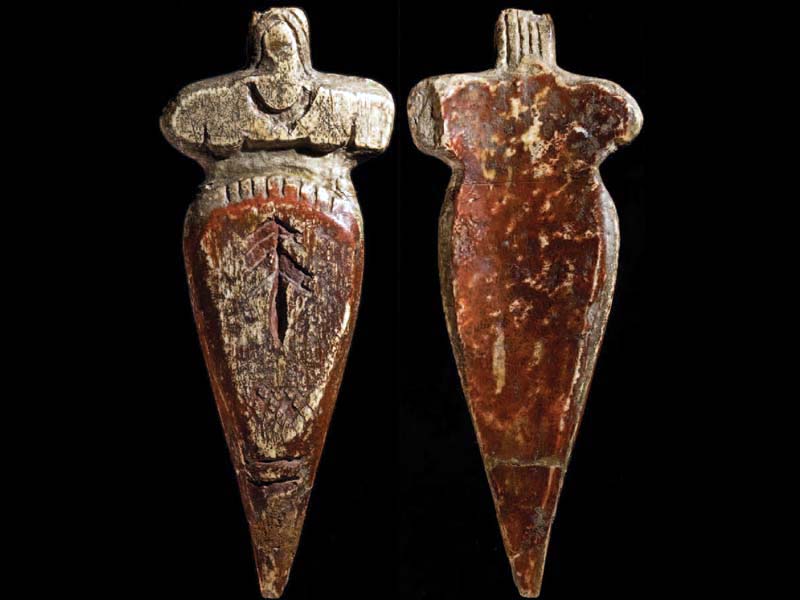
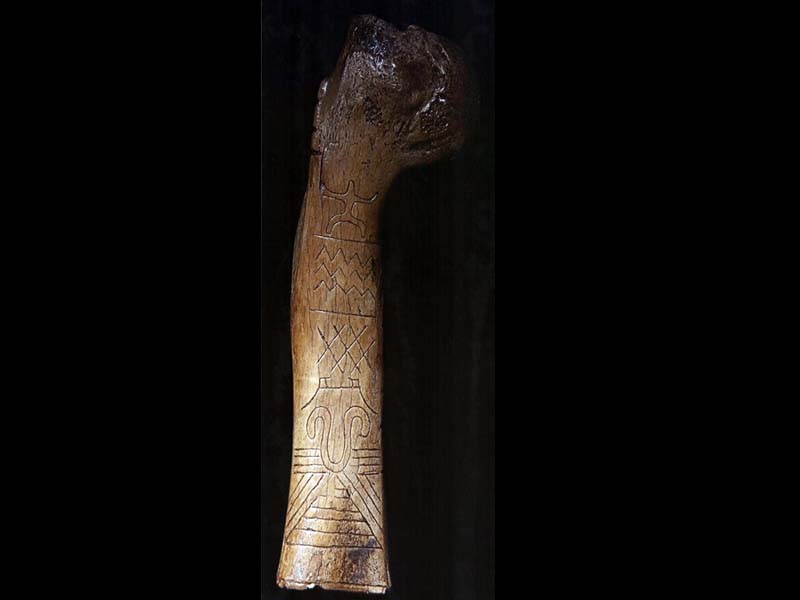
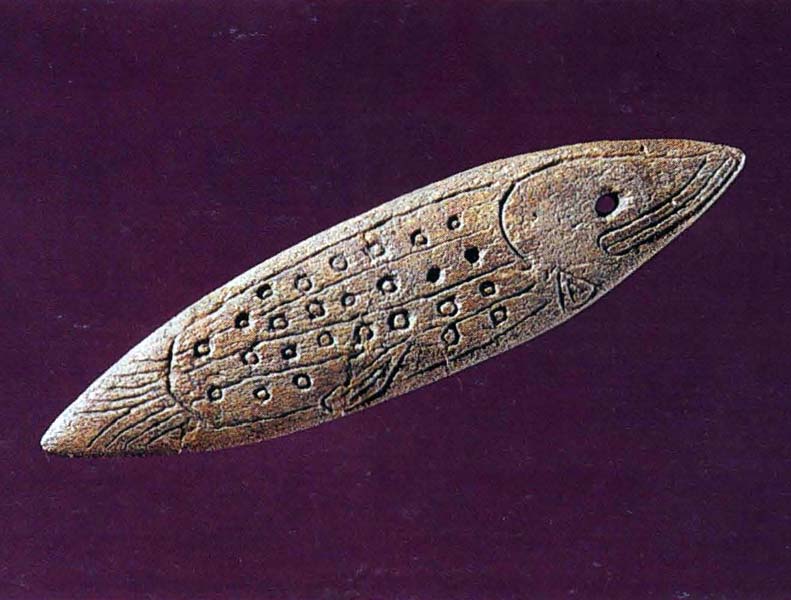
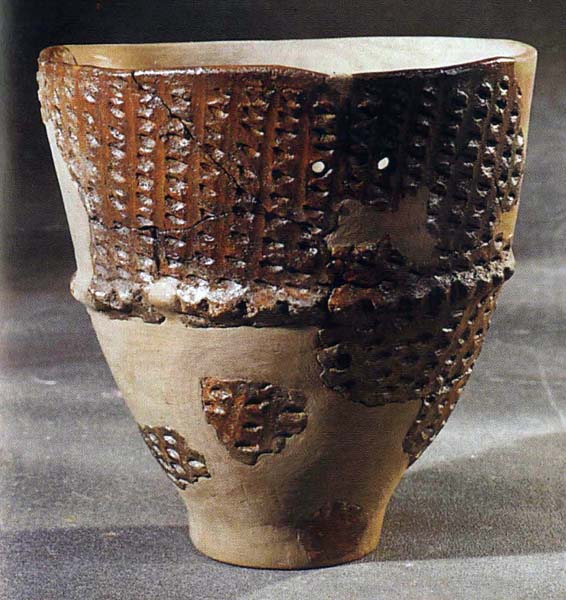
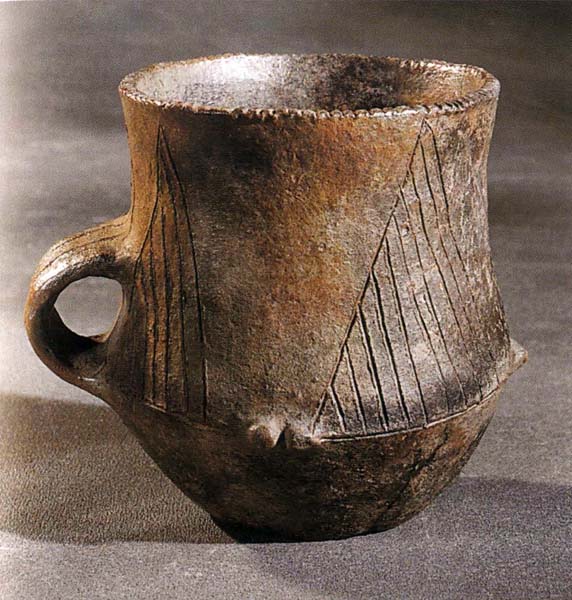
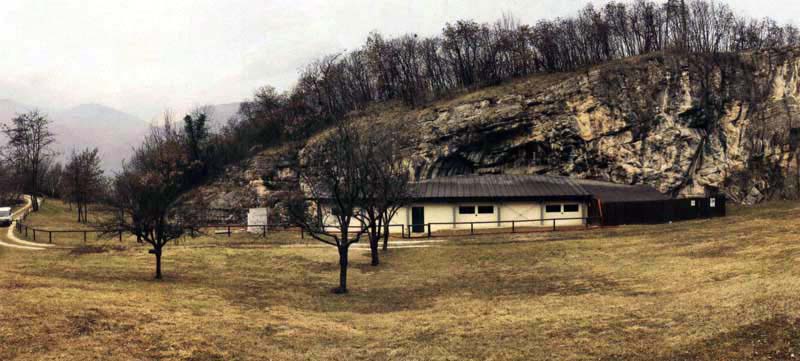
Historical notes
Shelter Gaban is located in Piazzina di Martignano, in the northeastern suburbs of the city of Trento, on a flat area located under a natural rock ledge about 10 meters high, 6 meters deep and 60 meters long. The particular exposure, protected from the north winds, has favored the attendance of the site in the prehistoric age, attested with a certain continuity from the Mesolithic (7500 BC) to the Middle Bronze Age (1600 BC). The first surveys began in 1962 when the Director of the Local Museum of Uses and Customs Giuseppe Sebesta, intrigued by the ceramic finds that surfaced on site, carried out the first exploratory excavation without any results. The first real excavation campaign began only in 1970, under the direction of Bernardo Bagolini, then Director of the Prehistory section of the Museum of Natural Sciences, continued with annual campaigns until 1981, thanks to the availability of the site owner, Mr. Richetto Pasquali, nicknamed Gaban due to the fact that he loved to wear a "Gaban", a cloak, which therefore gave the name to the shelter. A covering structure was immediately built for the excavation area, thus allowing the setting up of a permanent construction site, which brought to light an imposing stratigraphic section of about 6,00 m still visible on site; it is noted that even today the basic level of the Mesolithic has not been reached. Between 1982 and 1985 the studies were carried out on the Mesolithic level, under the direction of Bernardo Bagolini, Alberto Broglio and Stephan Koslowski. Since 2007 the excavations have been under the direction of Annaluisa Pedrotti of the University of Trento, with the collaboration of Diego Angelucci and Fabio Cavulli. The excavated area is located close to the shelter, on a surface of about 60 m5, divided into XNUMX sectors; numerous art objects have been found, both in Mesolithic and early Neolithic deposits, thus making Riparo Gaban one of the main international reference sites for the study of the neolithization process, i.e. the transition from nomadic hunter-gatherer groups to sedentary groups of breeders-farmers.
CARD
LATEST PUBLISHED TEXTS
VISIT THE FACTSHEETS BY OBJECT

